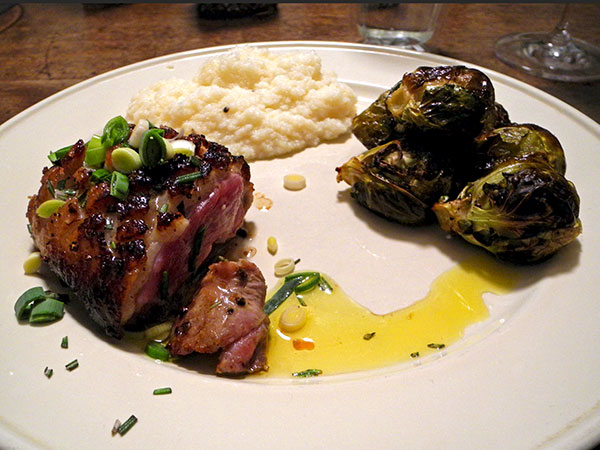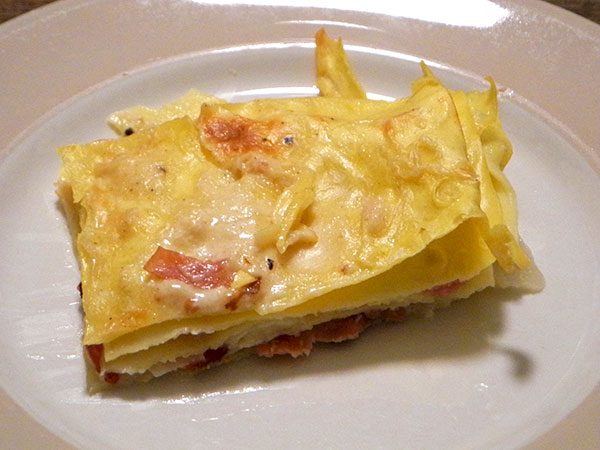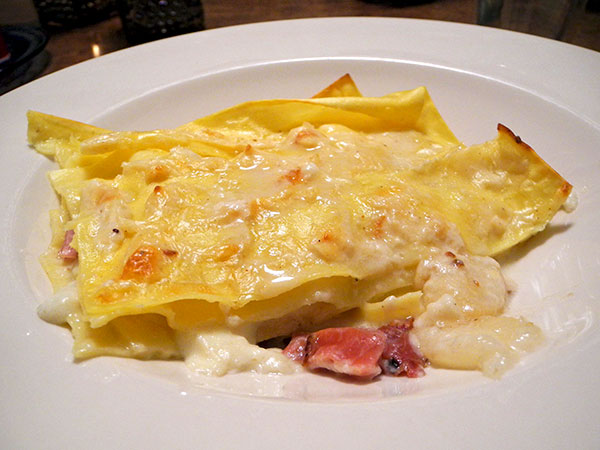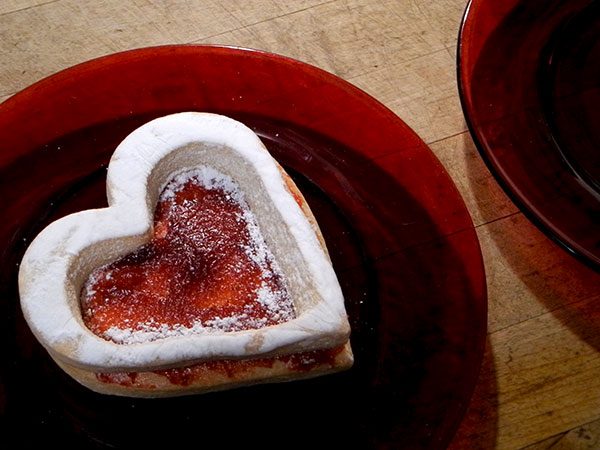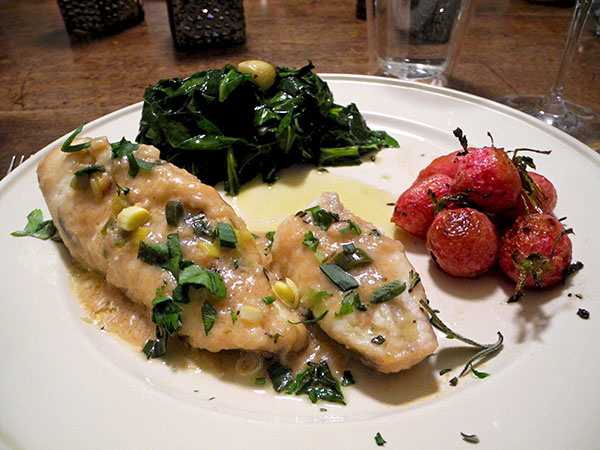Note to self: This was surprisingly good, especially for a meal that was heavily improvised.
Except for the fresh mint, which I picked up when I stopped by the Eataly Wine Shop to pick up a bottle of Varnelli this afternoon, this dinner was assembled entirely from ingredients I already had in the kitchen. The idea was to not go out for anything, but to use what I already had on hand (I defrosted the crab cakes the night before), largely items I preferred not to hang onto any longer. There was another self-imposed stipulation: Because of our decision to watch the last two hours of ‘Die Meistersinger’ beforehand, the meal be put on the table as quickly as reasonably possible. I managed to be successful in incorporating my existing stock, and but I think I went a little overtime in preparing it.
- crab cakes from PE & DD Seafood (ingredients: crab, egg, flour, red & green peppers, garlic, salt, pepper, breadcrumbs, mayonnaise, milk, celery, parsley), heated in a heavy iron pan, four minutes to each side, then topped with a little salsa verde, assembled with parsley and mint from Eataly, rinsed and filleted salted anchovies, rinsed salted capers, chopped garlic from Samascott Orchards, dijon mustard, olive oil, and good red wine vinegar
- a small amount of radicchio from from S.&S.O. Produce Farms and chopped parsley from Eataly, dressed with good olive oil and the same red wine vinegar, salt, and pepper
- a compote composed of a fennel bulb I had brought home from Eataly a little while back but which had nevertheless totally maintained its freshness, with good canned plum tomatoes from Eataly, Kalamata olives, unpitted, from Buon Italia, thyme from Manhattan Fruit Exchange, Rocambole garlic from Keith’s Farm, more capers, and parsley from Eataly, the dish finished with chopped fennel fronds and more chopped parsley
- the wine was a Portuguese white, Quinta do Alqueve Fernão Peres 2010
- the music was Mahler’s Fourth, with Haitink conducting the Berlin Philharmonic

